In 2025, significant changes are being implemented by the Driver and Vehicle Licensing Agency (DVLA) that will impact every motorist in the UK. These changes are part of a broader initiative to modernise the driving licence system, enhance road safety, and streamline driver services.
Whether you’re a new driver, a seasoned professional, or simply someone trying to stay compliant, understanding these changes is crucial. This blog breaks down the upcoming DVLA licence changes, their implications, and what every driver in London and the UK should know to remain on the right side of the law.
What Are the Key DVLA Licence Changes Coming in 2025?
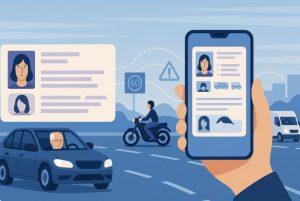
Major Overhaul in Licence Management
2025 will see the transition from traditional plastic driving licences to digital formats, a step aimed at increasing convenience and reducing the reliance on physical documentation. The DVLA has confirmed that plastic photocards will eventually be phased out, although physical cards will still be available on request during the transition.
Introduction of Centralised Digital Identity
The new changes include the rollout of a central digital ID system, which integrates a driver’s licence into an app-based system. This is designed to link directly with other government services, such as the NHS and HMRC.
Updates to Licence Categories
There will be updates in various driving licence categories, especially for electric vehicles (EVs) and heavy goods vehicles (HGVs). For instance, EV-specific training modules and assessment criteria will be introduced for new drivers in those categories.
How Will Digital Driving Licences Work in the UK?
App-Based Licence System
The DVLA will introduce a mobile licence system accessible through a secure government app. This will allow drivers to present their licence using a smartphone, eliminating the need to carry a physical photocard.
Verification and Privacy
Digital licences will be verified using biometric authentication, such as facial recognition or fingerprint ID. The DVLA has stated that these systems will comply with GDPR standards to protect driver privacy.
Accessibility and Offline Use
To ensure inclusivity, drivers who don’t have access to smartphones will still be able to request a traditional licence.The app will also offer offline access, allowing users to display their credentials even without internet connectivity.
Who Will Be Affected by the 2025 DVLA Licence Rules?
New Drivers
Those applying for a provisional licence or taking the driving test in 2025 will see the most immediate changes. Digital application processes and updated test structures are being rolled out.
Professional and Commercial Drivers
Commercial drivers, including taxi drivers, couriers, and HGV operators, will be required to complete updated modules under the Driver Certificate of Professional Competence (CPC) scheme.
Elderly Drivers
Drivers over 70 will need to use the new digital portal for renewing licences and self-declaring medical conditions. This system is aimed at streamlining the medical fitness review process.
Why Is the DVLA Making These Changes?
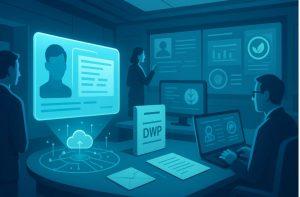
Technological Modernisation
The government is aiming to modernise UK roads and driving systems by embracing digital infrastructure. The DVLA’s move aligns with broader digital transformation across public services.
Environmental and Cost Benefits
Reducing the need for plastic cards cuts down on environmental waste. Additionally, digital licences are cheaper to issue and update, saving the government millions annually.
Improved Road Safety
The DVLA has linked these changes to road safety efforts, with better tracking of suspended licences, unqualified drivers, and expired insurance or MOTs.
When Do the DVLA Licence Changes Come into Effect?
Change |
Effective From |
Details |
| Digital Licence Rollout | July 2025 | Available via GOV.UK and mobile apps |
| New EV Licence Category Rules | September 2025 | Mandatory new assessment modules for electric vehicle licences |
| Photocard Licence Phase-Out | From October 2025 | Gradual; optional for existing drivers to keep physical cards |
| Online Renewals and Updates | Already active | Expanded in 2025 for all age groups and medical conditions |
| CPC Training for Commercial Use | January 2025 | Mandatory new content for logistics and transport sector |
What Happens If You Don’t Comply With the New Licence Requirements?
Fines and Penalties
Drivers who continue using expired or invalid licences under the new system may face fines up to £1,000. This includes those who fail to renew digital licences or update medical information as required.
Legal Complications
Failing to update your information may result in driving bans, insurance voiding, or even court prosecution for repeat offenders.
Automatic Suspension Triggers
With the digital system in place, the DVLA will more easily detect and automatically suspend licences if serious offences or lapses are found.
How Do You Renew or Update Your Licence Under the New DVLA Rules?

Digital Renewal Steps
The DVLA’s updated portal will allow users to:
- Create a GOV.UK Driver Account: To manage your licence, you’ll first need to register and verify your identity using biometric data or passport verification.
- Submit Online Forms: Renewal forms for expired or expiring licences are to be submitted digitally, along with any updated medical records.
- Upload Documents: All identity proof and residency documents must be uploaded securely, with support for scanning via smartphone cameras.
- Pay Digitally: Payments can be made using secure gateways, including Apple Pay and Google Pay, eliminating postal delays.
What Do the DVLA Licence Changes Mean for Provisional Drivers?
Updated Theory and Practical Test
From late 2025, provisional drivers will face new testing formats, particularly with the inclusion of modules on:
- Electric vehicle awareness
- Road safety using AI-based hazard perception
- Using digital licence systems
Digital Booking and Tracking
Learner drivers can now book tests, track waiting lists, and receive result updates directly through the DVLA app.
Are There Any New Driving Licence Categories in 2025?
EV Licence Categories
New categories such as Category E1 and E2 are being introduced for electric-only vehicles, with unique training and certification paths.
HGV Licence Changes
Changes in HGV categories will reflect payload capacity revisions and mandatory training in autonomous driving support systems.
Two-Wheel and Motorcycle Adjustments
Smaller motorcycle categories will see refined engine capacity limits, aligned with EU safety regulations.
How Can Drivers Prepare for the 2025 DVLA Licence Changes?
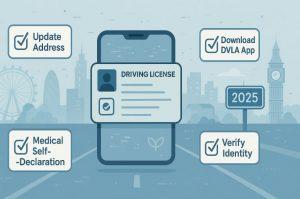
- Update Personal Details: Ensure your address, name, and contact information are accurate on your DVLA profile.
- Set Up Digital Access: Download the DVLA mobile app and set up a secure login using GOV.UK credentials.
- Complete Necessary Training: If you fall under professional or new category regulations, begin the relevant CPC or EV training early.
- Monitor Licence Expiry: Use the DVLA’s digital dashboard to check expiry dates, medical declarations, and upcoming deadlines.
How Will DVLA Licence Changes Impact Vehicle Ownership Transfers?
Increased Oversight on Private Sales
Starting in late 2025, the DVLA will integrate real-time licence verification into its vehicle ownership transfer system. This means when a vehicle is sold privately or through a dealership, the buyer’s driving licence will be digitally checked for validity before the transfer is confirmed.
Digital V5C Logbook Integration
The traditional V5C logbook will be replaced with a digital logbook linked to your DVLA profile. This logbook will automatically update with the new owner’s details once a transfer is approved, making the process more seamless and reducing paper-based fraud.
Time-Sensitive Transfer Alerts
If the new owner fails to complete the licence validation within a specified window (usually 7 days), the seller will receive an automatic notification, ensuring they’re not held responsible for penalties or violations committed post-sale.
What Support Is Available for Drivers Struggling with Digital Licence Transition?

Government Assistance Programmes
The DVLA recognises that not all drivers are digitally confident. As a result, a Digital Support Helpline and in-person assistance centres at selected post offices across London will help users register and navigate the new system.
Step-by-Step Video Tutorials
The GOV.UK portal is launching a series of video walkthroughs that guide users through setting up their accounts, uploading documents, and renewing or updating their licence online.
Community Workshops
The DVLA is also partnering with local councils and community organisations to offer free workshops targeting elderly drivers and those without regular internet access. These workshops will run monthly throughout 2025.
How Are DVLA Licence Changes Connected to Broader UK Transport Goals?
National Digital Identity Programme
The DVLA licence transformation is part of the UK government’s National Digital Identity Framework, which aims to link various public services through a central authentication system. Your digital licence will eventually interface with healthcare, tax, and vehicle insurance platforms.
Push Toward Zero Emission Mobility
Driving licence categories and training updates reflect the UK’s commitment to its Net Zero 2050 goals. By streamlining EV training and introducing digital-first services, the DVLA is helping drivers and operators prepare for the electric future.
Traffic and Safety Data Integration
Real-time data collected through the DVLA’s systems will feed into broader smart city initiatives. This includes traffic flow management, predictive analytics for accident hotspots, and proactive licence suspension for high-risk drivers.
Will Artificial Intelligence Play a Role in DVLA Licence Management?

AI-Driven Application Processing
In a move towards ultra-efficiency, the DVLA is testing the integration of artificial intelligence (AI) to automate routine tasks like application reviews, identity verification, and document validation. This would drastically reduce turnaround times for licence renewals and updates.
Predictive Analysis for Road Safety
AI is also being developed to analyse driver behaviour patterns, potentially identifying risky drivers based on points, offence history, and vehicle usage. These systems could flag drivers for further assessment or licence suspension before a serious incident occurs.
Chatbots and Virtual Assistance
To handle the increasing demand for support, the DVLA has introduced AI-powered chatbots on its website and app. These bots can help users understand new rules, troubleshoot digital account issues, and guide them through processes like digital licence renewals.
Ethical and Data Concerns
While AI integration promises enhanced efficiency, there are public concerns about data privacy and algorithmic bias. The DVLA has committed to transparency and accountability, ensuring that AI use will remain compliant with GDPR and subject to human oversight.
Conclusion
The DVLA licence changes in 2025 mark a pivotal shift towards digitisation and modernisation of road regulations in the UK. While these changes may seem overwhelming, they’re ultimately designed to improve efficiency, reduce fraud, and ensure safer roads.
Drivers in London and across the UK should begin preparing now by understanding their responsibilities and transitioning to the new systems as early as possible.
FAQs
What should I do if I lose access to my digital licence?
You can retrieve it by logging into your GOV.UK account. If you’ve lost device access, contact the DVLA for a recovery process.
Is the physical photocard still valid after digital licences are introduced?
Yes, but it will gradually be phased out. It remains valid during the transition period unless otherwise specified.
Will digital licences be accepted abroad?
Currently, they are recognised only in the UK. International acceptance may be introduced in later stages.
Do elderly drivers need to use the app?
No, but they are encouraged to. Alternatives like postal renewals and phone support remain available.
Are there extra costs for digital licence renewal?
No additional fees are charged for switching to digital. Standard renewal fees still apply.
Can provisional drivers still use the old test format?
No. From September 2025, the new format will be mandatory for all provisional licence applicants.
How secure is the new digital system?
It uses multi-layer encryption and biometric verification, ensuring compliance with UK data protection laws.





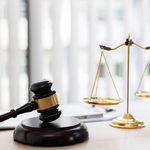


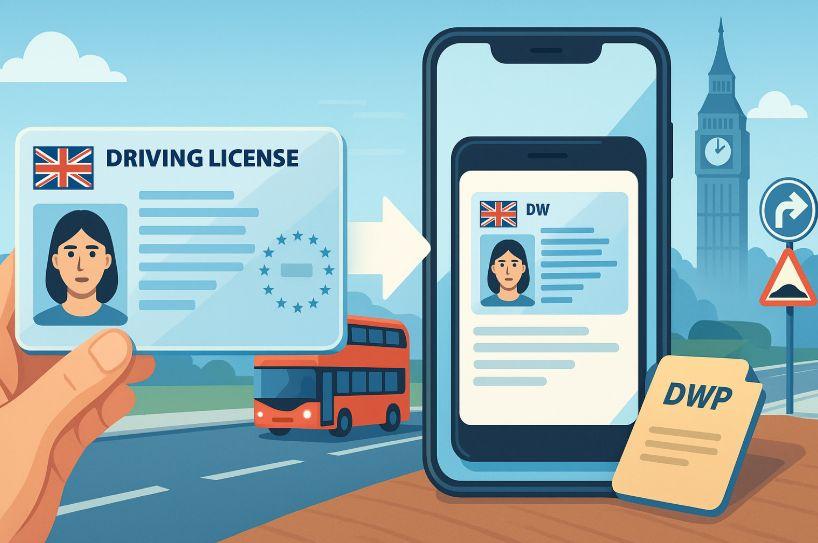
Leave feedback about this